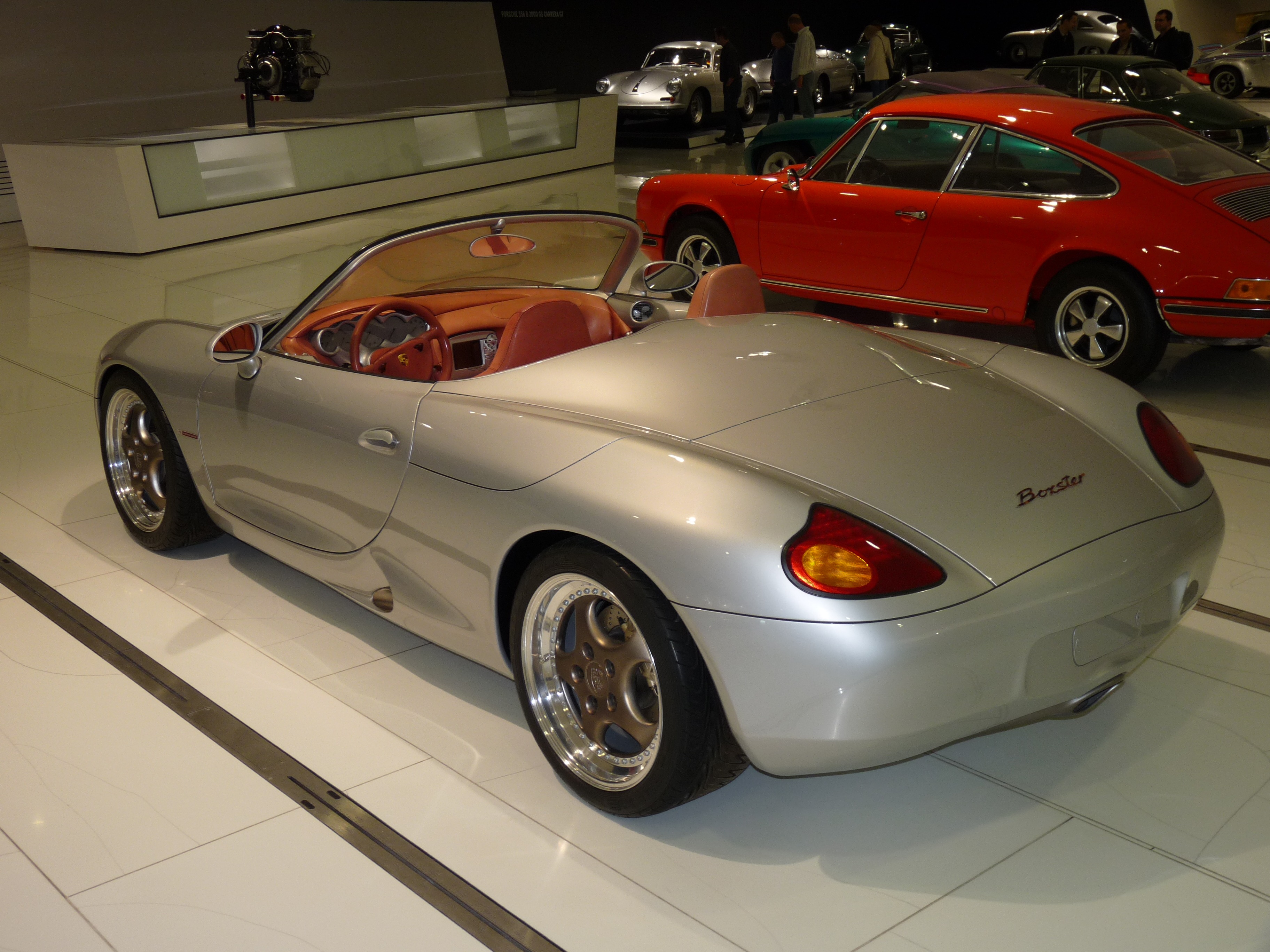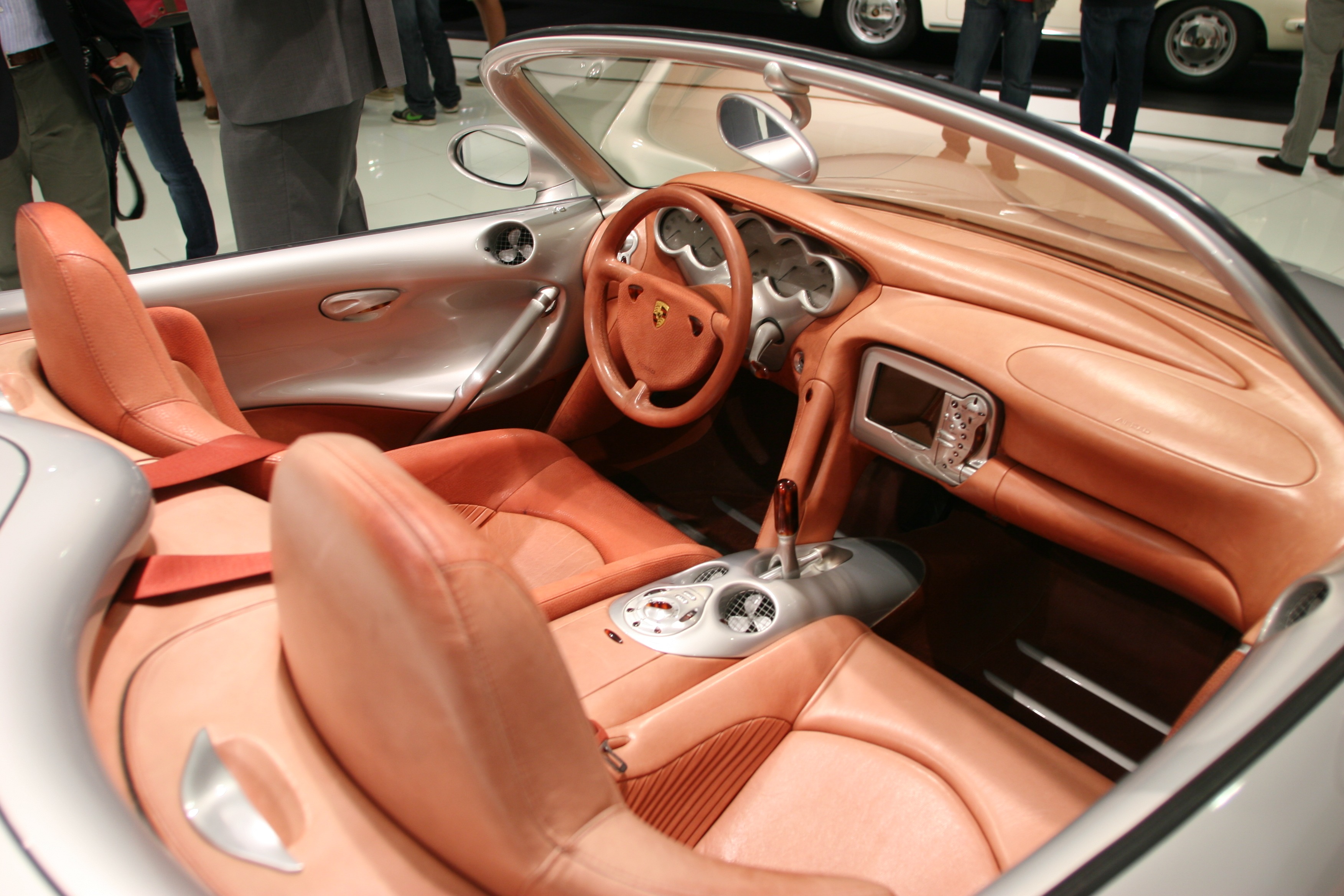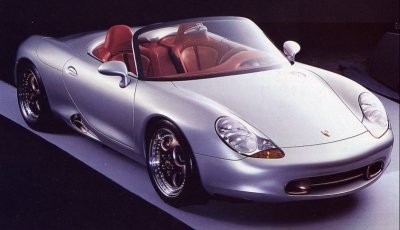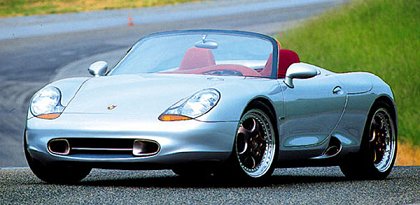After an unhappy flirtation with front-engined grand tourers, by the early 1990s the German specialist car maker Porsche had decided to revert to its sports-car roots.
This was a tradition exemplified by its long-running and continually evolving 911. At the 1993 Detroit Motor Show the company unveiled the related Boxster, an open, two-setter, mid-engined concept car.
The venue was wholly appropriate one because America is Porsche’s largest export market. The name chosen was a combination of two elements; it referred to the boxer motor, which is what Europeans call the horizontally opposed engine used by Porsche, and the 356-based Speedster design that was created for American customers in the 1950s.
There were also mechanical and stylistic echoes of the 550 Spyder of similar vintage that was the firm’s first sports racer. But the Boxster’s lines also looked forward as well as back.
Silver Roadster
Outwardly it was the work of Grant Larson, a young American Porsche stylist. The silver roadster brought an appreciative response at Detroit, it looked good from its neat asymmetrical headlamps and distinctive curved doors, to the flush rear lights that incorporated LED (light-emitting diode) technology.
Adventurous Interior
The interior, the work of Stefan Stark, was equally adventurous. It included an aluminium instrument surround that played host to five dials with the revolution counter in pride of place. A novel feature was that the calibrations were engraved on the covering glass.
An LCD (liquid-crystal display) screen was positioned in the centre of the dashboard and it included a radio, TV/video, navigational aid, onboard computer system and the inevitable telephone.
The exposed gear lever on the transmission tunnel was set in an aluminium console that also contained two miniature cooling fans and ventilation controls.
Mechanical details were harder to come by at Detroit, although it was clear that this show car was intended to be mid-engined with the location of the projected power unit indicated by small air intakes just below the doors.
If the car’s debut had been intended as a kite-flying exercise by a beleaguered company, it certainly succeeded because the Boxster was identified as undoubted ‘hit’. Within a month, Porsche announced that it would be putting the car into production. But it was 1996 before it was well and truly ready for the road.
Outwardly the production Boxster bears a close resemblance to the 1993 concept, although such features the curved doors, air intakes and delicately contrived interior have succumbed to the realities of the manufacturing process. The engine is a 2.5 litre, water-cooled six, a boxer motor of course…
Wood, Jonathan (1997) Concept Cars, Paragon, ISBN 0-75252-084-9.




















